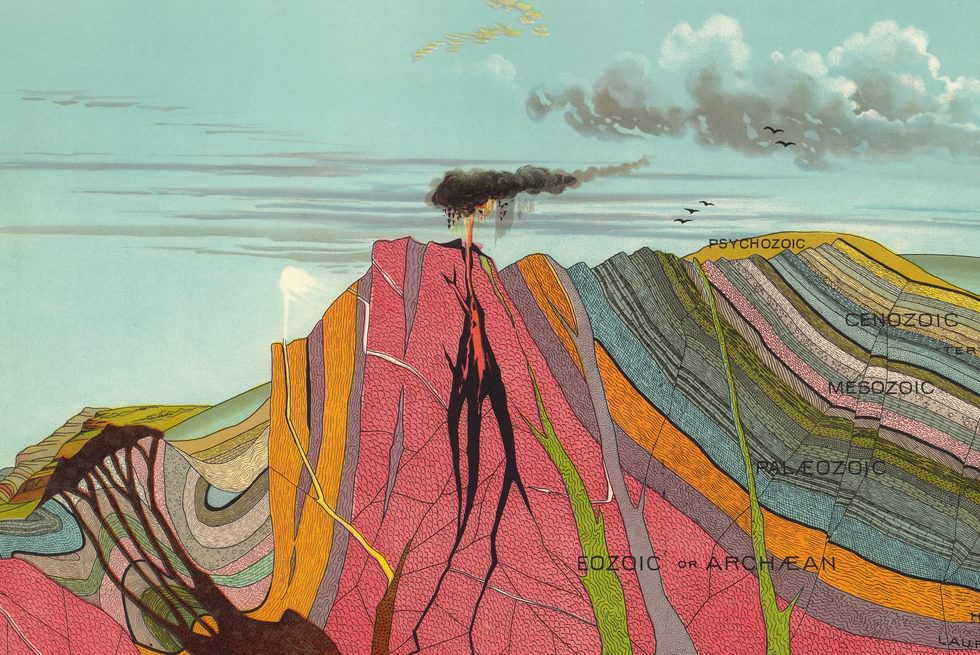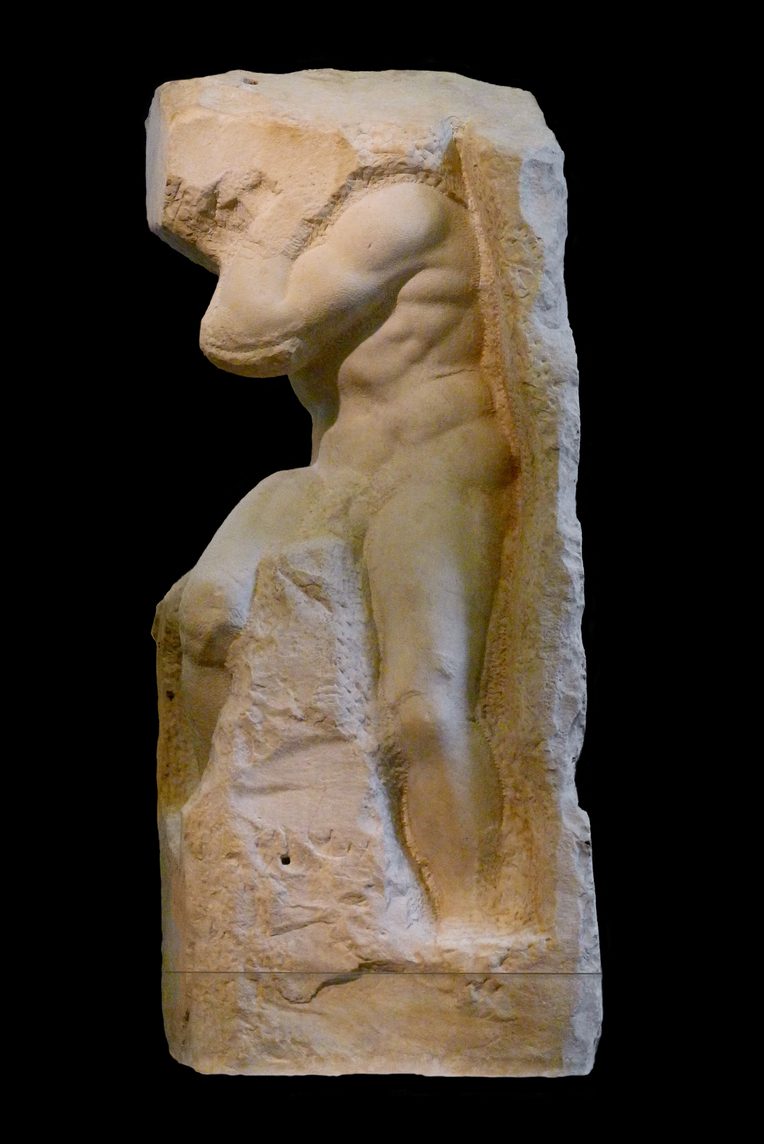Geological Humanism
From the Series: Geological Anthropology
From the Series: Geological Anthropology

Antihumanism has defined much of anthropology and critical theory since the 1960s, taking such forms as a rejection of biological universals and any notion of a universal subject. Yet revisiting the wellsprings of the humanist traditions, including their pluralism, may give us pause when considering contemporary dilemmas surrounding climate change and the Anthropocene. For these criticisms present a narrow interpretation of “humanism” while failing to specify what was emergent in the historical recognition of human planetary existence. The humanism criticized by poststructuralists such as Jacques Derrida (1982) or Bruno Latour (1993) was not the humanism of the nineteenth century, which tended to focus on the emergent experience of deep geological and evolutionary time in a secular universe. In turn, nineteenth-century humanism was different from Renaissance humanism, such as that of Niccolo Machiavelli or Amerigo Vespucci, who were concerned with a secular understanding of plural customs in a period of expansive worldwide exploration.

These transformative experiences—from world exploration to the radical secularization of historical, biological, and geological processes—are central to the emergence of anthropological thought, and it may be worth reappraising the antihumanist concerns motivating theory in anthropology since the 1960s. The cultural salience of nineteenth-century geology forms one practical and philosophical context for current debates about the status of the human in matters of earthly existence, and thus offers perspective on the Anthropocene not as an epoch or idea but as a partial and fragile cultural project.
In this short piece I emphasize the plurality of humanisms surrounding nineteenth-century geology, which I draw in contrast to Paul Crutzen’s “Anthropocene” ideology. I bear in mind Kathryn Yusoff’s (2018) observation that humanist projects were also inhumanist in the manner in which distinctions between the human and animal, and between animate beings and inanimate matter, were crucial for devastating political projects such as indigenous genocide and the trans-Atlantic slave trade. However, rather than reduce this plurality to a singular Enlightenment project, I articulate a different axis of critique by distinguishing between those that revel in earthly existence and those, like proposals for geoengineering or Elon Musk’s program to colonize Mars, that smell of a certain “contempt for the earth.” The distinction is Friedrich Nietzsche’s (1961, 140).
Renaissance humanist thought influenced by the recuperation of Lucretius and Epicurus was materialist and heterodox, if not outright skeptical of church doctrine. As Alison Brown (2010) has detailed, cultural thought in commercial Florence was also keenly interested in the diversity of human existence along expanding trade routes through northern Africa, Asia, and later the Mundus Novus, the exploration of which Vespucci participated in and for whom the Americas were named. The planetarity of such a dynamic and culturally formative time is perhaps echoed in nineteenth-century efforts to come to terms with scientific postulates of geological deep time and biological evolution. By 1831, Honore de Balzac (1888) could write in his novel Le Peau Chagrin, published in 1831 and the first of his La comedie humaine:
Did you ever launch yourself into the vague immensity of space and time as you read the geological works of Cuvier? . . . The soul is terrified as it perceives the thousand millions of years and of peoples which feeble human memory, even divine indestructible tradition has forgotten, yet whose dust survives, here on the surface of our earth, in the two feet of soil which give us bread and flowers.
The potential demise of civilization was clearly in play. Balzac’s narrative examination of earthly existence shows not only the extent to which geology was in the process of becoming totally revised according to modern metaphors of linear time (Gould 2007), but also the manner in which historical explanations for the contingency of human existence were caught in the notion of process spanning history, biology, and geology. Bound to the earth, the human was rapidly becoming understood as a mere accident.
There are too many instances to dwell upon for this brief precis of an idea. Geological humanism can be found in Joseph Fourier’s 1824 attempt to determine the causes of Earth’s temperature, with its subtext that humanity is floating purposelessly in an immense void of deathly cold. It is central to Victorian art critic John Ruskin, who lectured on geology because he believed the science formed the core of all landscape painting in the same way that anatomy revolutionized Renaissance paintings of the human form. And at the close of the century, Svante Arrhenius, who developed the first model of atmospheric carbon dioxide’s effects on Earth’s temperature, engaged in speculative pseudo-scientific debates about the habitability of other worlds and the possibilities for interplanetary travel. The geological figure of the Earth-bound human is not a matter of the political animal or the biological Homo sapiens, but of humanity taken as a planetary collective.
What matters for a reappraisal of geological humanism is whether there can be a planetary anthropology that smells of the Earth—an anthropology of Earth as home. Hence, I close with reflection on Paul Crutzen’s Anthropocene ideology. Crutzen’s popularization of the Anthropocene term has been coupled with an extensive discussion of the necessity of Earth mastery pursued through rational thought and technological domination, and resulting in either future destruction or enlightened management of Earth system (Crutzen 2002; see also Crist 2013). However, it has not been remarked upon that at this same time Crutzen (2006) also popularized techniques for geoengineering that would involve pumping massive volumes of chemical aerosols into the upper atmosphere in a program to deliberately manipulate Earth’s temperature rather than curtail human carbon emissions.
Hannah Arendt (2006, 60), theorist of the Anthropocene avant la lettre, would recognize this as initiating “an endless new chain of happenings whose eventual outcome the actor is utterly incapable of knowing or controlling beforehand.” Arendt (2006, 63) here identifies a faulty anthropology—a mistaken definition of “man as a being capable of action”—as key to the historical situation in which “the self-created risks mankind faces today have never been faced before.” Perhaps in this light it would be best to view the Anthropocene not as an idea, an epoch, or a consolidated historical block, but as a project that instantiates a faulty anthropology. Representing breathtaking instances of Yusoff’s (2018) inhumanism, the Anthropocene concept and geoengineering are intellectual twins that reek of contempt for the Earth.
Arendt, Hannah. 2006. Between Past and Future: Eight Exercises in Political Thought. New York: Penguin.
Balzac, Honore de. 1888. The Magic Skin. Translated by Katherine P Wormeley. Boston: Roberts Brothers.
Brown, Alison. 2010. The Return of Lucretius to Renaissance Florence. Cambridge, Mass.: Harvard University Press.
Crist, Eileen. 2013. “On the Poverty of Our Nomenclature.” Environmental Humanities 3, no. 1: 129–47.
Crutzen, Paul J. 2002. “Geology of Mankind.” Nature 415, no. 6867: 23.
———. 2006. “Albedo Enhancement by Stratospheric Sulfur Injections: A Contribution to Resolve a Policy Dilemma?” Climatic Change 77, no. 3/4: 211–20.
Derrida, Jacques. 1982. Margins of Philosophy. Translated by Alan Bass. Chicago: University of Chicago Press.
Gould, Stephen Jay. 2007. Time’s Arrow, Time’s Cycle: Myth and Metaphor in the Discovery of Geological Time. Cambridge, Mass.: Harvard University Press.
Latour, Bruno. 1993. We Have Never Been Modern. Cambridge, Mass.: Harvard University Press.
Nietzsche, Friedrich. 1961. Thus Spoke Zarathustra. Translated and with an introduction by Reginald John Hollingdale. London: Penguin.
Yusoff, Kathryn. 2018. A Billion Black Anthropocenes or None. Minneapolis: University of Minnesota Press.